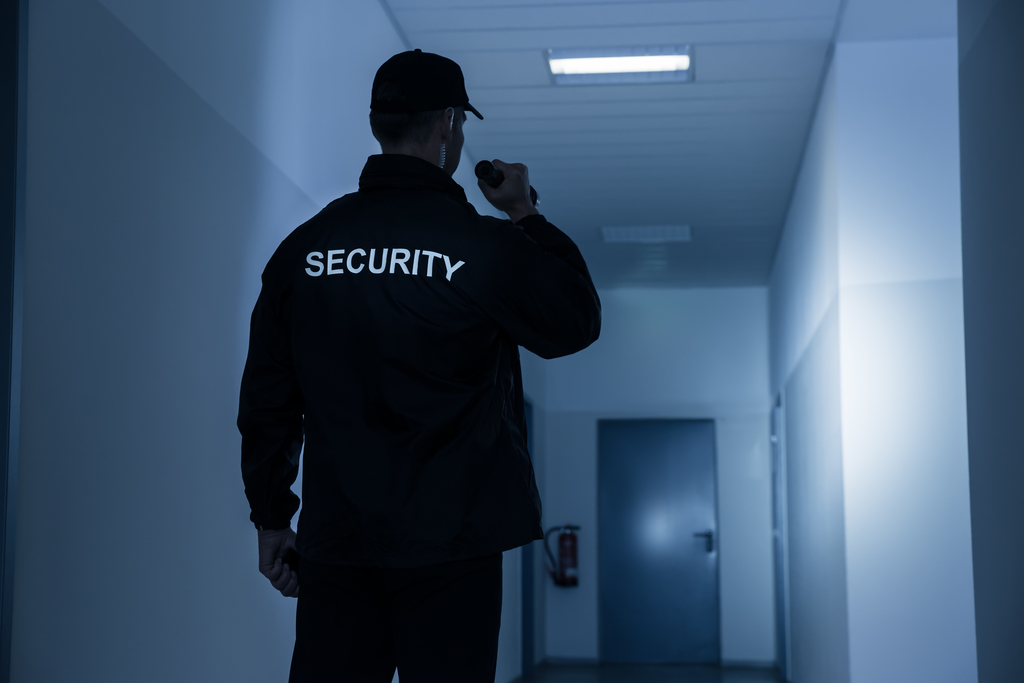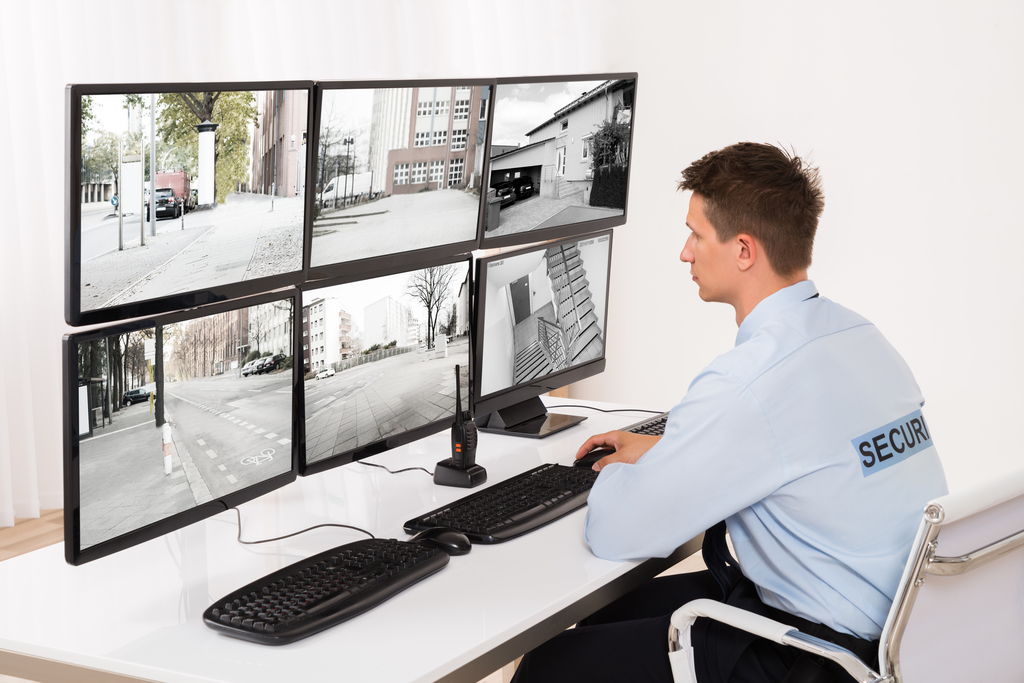
Brian Sims
Editor

Brian Sims
Editor
The inaugural Security Matters webinar brought together a stellar line-up of industry professionals to discuss the desired progression and development for security guarding in the second half of 2020 and beyond, touching on several core issues. Brian Sims reports on the key outcomes
THE COVID-19 pandemic has, for the time being at least, fundamentally changed the way in which many of us work on a daily basis. Business professionals are now even more heavily reliant on technology and remote working than ever before. However, in some disciplines – security guarding being one of them – operating remotely simply isn’t possible.
Myriad business premises have been bereft of staff, but a trained and alert physical presence is still necessary on site to protect the property within. Not surprisingly, this scenario has placed the discipline of security guarding firmly under the spotlight.
Several key industry organisations in our sector – among them the British Security Industry Association (BSIA), The Security Institute, the National Security Inspectorate and the Security Systems and Alarms Inspection Board – determinedly lobbied for ‘key worker’ status for front line security guarding personnel as a direct result of the pandemic. Is that push for due recognition going to have a markedly positive impact on the sector going forward when we fully emerge from the COVID-19 lockdown?
The industry and its client base needs to grasp the nettle now and open up the debate around what guarding looks like at the present time and, perhaps more importantly, by doing so purposefully help to frame and underpin what security guarding should and must look like as a discipline in the years ahead.
With this very premise in mind, the inaugural Security Matters webinar on Wednesday 28 May – supported by The Security Event – sought to discuss the desired roadmap for guarding in the second half of 2020 and beyond, touching on key issues including the changing nature of security services provision on the ground, the part played by regulation (ie the Security Industry Authority’s Approved Contractor), the core subject of training and skill sets with a view towards meeting ever-changing buyer expectations and, further, the perspective of those end users and what they demand of security companies to suit their own business requirements.
In short, what must the discipline of security guarding be doing now to safeguard its future progression and development?
Representing the Security Industry Authority (SIA) was Steve McCormick, executive director of operations and standards, and from the BSIA Tony Cockcroft (vice-chair of the Trade Association and chair of its Security Guarding Section). Jason Towse (managing director of business services at Mitie and a great champion of converged security solutions) spoke from the security companies’ perspective, while Gary Wilkinson (head of security and resilience delivery at Sellafield Ltd) offered his views as an end user. The event was chaired by Brian Sims, the Editor of Security Matters.
Development of the ACS
The SIA is tasked with licensing individuals and also raising standards, the latter via two routes. One is through the Approved Contractor Scheme (ACS) which works with businesses to create a framework upon which they can demonstrate their skills to clients. The second is all about skills, with the SIA setting particular minimum skills standards for people to enter the industry.
Commenting on what the SIA might be doing with the ACS over the coming period to support the industry in demonstrating its efficacy and encourage more businesses to join the scheme, Steve McCormick stated: “We have to continuously review and improve the way in which the ACS operates. We always look at how we work with certification bodies and security companies to make sure we’re representing good security delivery in the UK. It’s also about ensuring an assessment regime which is thorough and consistent and picks out points of excellence that have been demonstrated. This is very much work in progress.”
Should the ACS reflect more sector-specific excellence and particular specialisms? Should the SIA look in detail at differentiation (a point made many times) or would that differentiate in itself? How might the Regulator recognise excellence in other standards across the industry in a way that’s linked with the ACS? Is there a need for doing that? McCormick observed: “We’re looking to develop a strategy on this for the next few years.”
When it comes to skills development, it should always be recognised that the SIA is a creature of statute and must work with businesses to help them improve. “One of the ways we’ve gone about this is through licence-linked qualifications,” stated McCormick. “We review them every five years. We must make sure qualifications are delivered as robustly as possible and assessed fairly. We’re strong in pursuit of malpractice or where fraudulent behaviour is alleged to have taken place.”
Commentators in the industry have urged the Regulator to do more on skills by establishing learning pathways alongside other skills training products. “I don’t think that’s necessarily the Regulator’s role,” countered McCormick. “We’ve chosen to work with the industry in facilitating a Skills Board to develop professional structures for the industry in terms of Continuing Professional Development and a defined career pathway.”
Changes are afoot. Licence-linked qualifications are being updated with a view towards risk management. First Aid skills will be a requirement. The SIA is also working with counter-terrorism bodies to make sure this element is always up-to-date and continuously reviewed. Risks such as acid attacks and ongoing knife crime will also be addressed in the new licence-linked qualifications.
“Crowd management is an element we’ve brought into the security guarding qualification,” asserted McCormick. “We’ve updated the qualifications to reflect technological changes. The effects of that change and the use of new equipment like body-worn cameras must be part of the mix.”
Lobbying Government
Always supporting and encouraging industry excellence, the BSIA has forged key partnerships with Government, industry leaders and police authorities alike and uses those partnerships to drive positive change and improve standards.
Current estimates suggest that the security industry here in the UK is worth £26 billion. Within that, the security guarding market has a turnover (in 2018 figures) of £4.1 billion. This is likely to have increased in the last two years.
“Coronavirus has impacted the sector,” began Tony Cockcroft in his presentation. “Currently, there are 2.1 million people unemployed in the UK. Perhaps now’s the time to have some of them thinking about security as a career of choice moving forward.”
As stated, the BSIA lobbied Government to realise ‘key worker’ clarification for security personnel which was critical for transacting roles in the pandemic. Cockcroft outlined: “An inquiry was made to the SIA on 10 March on what to do in the event of lockdown. By 20 March, having liaised with ourselves, MPs and Her Majesty’s Treasury in relation to cash supplies and civil contingencies, the SIA made a statement after discussions with the Home Office and the Cabinet Office to confirm that licence holders were/are key workers. On 22 March, Cash-and-Valuables-in-Transit workers were also classified as key workers.”
Front line operatives have been essential during COVID-19, supplying security to food distribution centres, COVID-19 Testing Centres and Nightingale Hospitals as well as covering for and supporting in-house teams. “Moving forward, it’s about raising the profile,” urged Cockcroft. “We need to use examples of the work conducted during the COVID-19 crisis and look at what more we can do. We must promote a common and positive message in partnership with organisations like The Security Institute.”
Evolving technology
Mitie employs 20,000 front line security personnel. That being so, the future roadmap of guarding is of paramount importance to Jason Towse and the people with whom he works on a daily basis.
“Back in 1994, it was said that technology would replace people in our sector,” recalled Towse. “Well, the guarding sector has grown 3% year-on-year since then. Technology has evolved beyond what anyone could have predicted. The increase in elements to be secured has risen ten-fold, driven by an evolving threat whether that be cyber-related, terrorism-related or to do with business crime. There are increased demands in terms of public safety, too.”
Further, Towse stated: “As long as we have street-level fear and live in a world of unpredictability, we’ll need a people response. There are now over 300,000 SIA-licensed officers. That number will not decrease.”
Towse envisages an acceleration in the use of intelligence. “This will be a pivotal part of the day-to-day remit from now. We have to stay in touch with up-to-date technology whether it be data collection tools or analytics and be able to communicate at pace in real-time to our front line people. Without a particular blend of services, operating in a 2%-3% return business is not going to be attractive for investors. Nor would it be attractive for joiners if we cannot recognise better margins and deliver better pay for our people.”
Without security, the country would have been in real trouble during COVID-19. Mitie alone had to mobilise an additional 3,000 people in just ten days to support challenges around social distancing and queues in the retail sector due to panic buying. Logistics security to support the supply chain was equally vital.
“We have to be open to change in the way we do things,” asserted Towse. “Adaptability is key. Going forward, service delivery has to be about a blend of people, technology and intelligence. We need to stay away from the commoditised purchase scenario. Data analytics and business intelligence systems will help us determine resource levels from an enterprise perspective. Our people will create value from that perspective. Value that’s not purely focused on security.”
Towse feels the future roadmap for guarding will see security organisations continuing to bridge the gap between the public and private sectors. That will gather pace on the back of the pandemic. “Building case files and evidence preparation will be front and centre as we continue to support the police in prosecutions and crime reduction initiatives.”
From Towse’s perspective, increased collaboration and intelligence sharing between organisations, customers and Government agencies including the police service is the future. “The market will continue to demand innovative technology solutions that support the new way of working and drive increased efficiencies. The aggregation and analysis of data, leading to the creation of actionable insight, will be the heartbeat of security operations.”
End user’s view
Sellafield Ltd is the holder of the licence for the 6 km2 Sellafield nuclear site located on the West Cumbrian coast. Playing host to more than 200 nuclear facilities, Sellafield Ltd is tasked with ensuring all on-site activities are carried out responsibly, securely and with due regard for the environment.
Keeping Sellafield safe and secure is a major priority and governs the decisions made by Gary Wilkinson and his colleagues every single day. “We focus on three key areas,” he observed. “Safe and secure site stewardship, demonstrable progress and return on investment.”
The delivery of safety and security is a team effort. That team includes Sellafield security and resilience staff and a civilian guard force (ie that provided by Mitie) as well as members of the Civil Nuclear Constabulary. “The guard force performs many and valued roles,” said Wilkinson, “among them the operation of authorised access control points and vehicle searches.”
Wilkinson couldn’t be happier with the performance of that guard force during the difficulties realised by the pandemic. “Our civilian guard force has been excellent during the COVID-19 response, duly demonstrating flexibility to suit the business’ needs, agility in terms of the tactics employed, sound teamwork, professionalism and motivation.”
In the coming years, Wilkinson is adamant that flexibility, agility and teamwork will be paramount for guarding operations alongside the optimisation of technology. Underpinning all of that is the ongoing development of the relationship between service supplier and customer.
“That relationship must be built at the strategic, tactical and operational levels,” concluded Wilkinson. “All three are of central importance in terms of delivering mission success. The relationship must be one of equal partners founded on complete trust and mutual understanding.”
*To view ‘Security Guarding – The Roadmap’ on demand visit www.fsmatters.com/security-matters and click on the ‘Webinars’ tab


